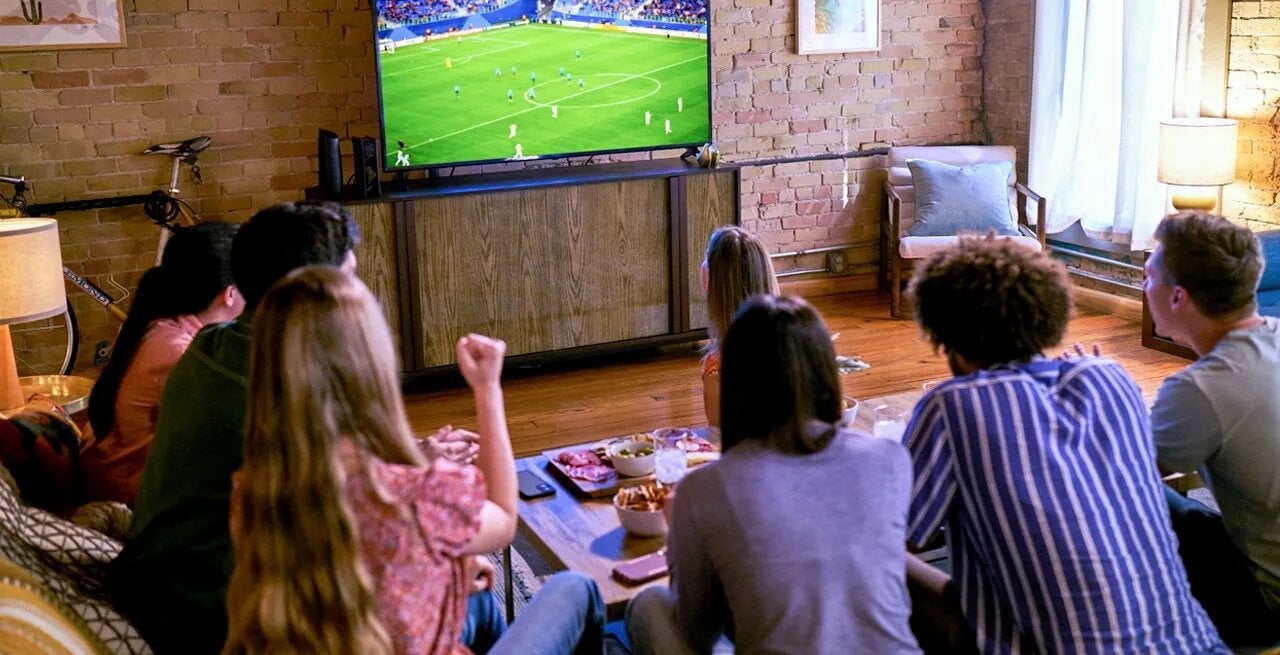The Price of Fandom: Watching Sports Is Becoming too Expensive; Can Anything Be Done?
Various team executives discussed the failure of the regional sports network model at the AXS DRIVE event.

The 2024 AXS DRIVE hosted by AXS and Sports Business Journal is being held this week in Frisco, Texas. The event has seen numerous sports and media executives come together to discuss sports from a business analytics perspective, and it gave team brass the chance to speak on many subjects. One topic that was rife for discussion during this week’s panels was the failure of the regional sports network (RSN) model. Most officials agreed that RSNs were no longer the most favorable way to distribute content, but many disagreed on the best way forward in a landscape where basically everything about the way Americans consume video is changing.
Key Details:
- Dallas Stars president Brad Alberts acknowledged his team’s plan to stream all in-market games free was a “controversial” one.
- Indiana Fever president Allison Barber said a free streaming service for her team has actually worked against local fans due to the popularity of Caitlin Clark.
- Fubo CEO David Gandler joined a podcast this week to talk about the possibility of sports pricing themselves out of viewers altogether.
Sports Business Journal compiled some excellent quotes from executives who spoke on the topic of RSNs at the AXS DRIVE event this week. Some, like Cleveland Cavaliers CEO Nic Barlage, acknowledged the need to stick with an RSN for the present and keep revenue coming in, while simultaneously planning for a future without it.
All said that the question of how to move on from RSNs was a tricky one to navigate. The problem is twofold: teams must figure out how to get their games into the homes of local fans, as well as how to make money off those broadcasts.
The Dallas Stars took a highly creative path after parting ways with Bally Sports Southwest, the hockey franh=chise decided to place all of their locally-broadcast games on a free streaming service starting in 2024. Stars CEO Brad Alberts acknowledged that decision as a “controversial” one, but said he was more concerned about doubling the reach of games after the 2023-24 season saw the Stars average around 30,000 viewers on Bally Sports Southwest.
“This is the future and we’re also not afraid to forge our own path and see how it all works,” Alberts said. “We know that there’s a lot of people paying attention and we set out to try to solve two problems. … The distribution problem that the RSN was creating. We think we’ve done that. And then we set out to fix the economic piece of this that we’re all concerned about and we’re going to see how that performs.”
Allison Barber, outgoing president of the WNBA’s Indiana Fever, cautioned that a free streaming service isn’t necessarily a cure-all, despite the undoubted effect it can have on reach. Pointing out that nationally broadcast games on channels like TNT or ESPN aren’t available to watch on local channels or streaming, Barber explained that the huge upswing in popularity for Fever games after the team drafted Caitlin Clark in 2024 actually left local fans unable to watch most contests on the team’s previously-established free streamer.
“That was what was right for that moment in time,” she said of the period when the team’s streamer launched. “Now we have a blended approach because of our 40 games this season, 36 of them were picked up by national distributors. … So sometimes we are giving up a little in the Indiana market to help the broader goal of driving more eyeballs and more fandom for the WNBA.”
These executives are still trying to find their way in an evolving marketplace, and each agrees that actually making games available to fans is the most important of the two problems they face. But how to monetize those games is a key balance to strike, as some options are making customers feel like they can’t afford to watch their favorite sports thanks to the increase in pay-TV and streaming costs.
How to Media Executives See the Problem?

Much like the key sports figures quoted above, media executives also acknowledge the problem of how to bring sports to viewers without pricing audiences out of the market entirely. Fubo CEO David Gandler discussed the problem on this week’s episode of the StreamTime Sports Podcast, which first dropped on Wednesday.
Gandler called the question of pricing sports video services “difficult to opine on,” and explained that his views as a consumer differ somewhat from his opinions as a programmer.
“As a consumer, I would say at some point it’s unrealistic to subscribe to any of these services,” Gandler said when asked about platforms like NFL Sunday Ticket that charge hundreds of dollars per season.
He predicted that viewers would begin heading back to sports bars or splitting the costs of such services to try and ease the burden on their budgets. Many sports streamers could fall by the wayside as customers find different ways to watch the game without every fan having to pay to do so.
Gandler’s position in this discussion is indeed a precarious one, as he’s the chairman of one of the most expensive live TV streaming services on the market. Fubo costs so much more than services like DIRECTV STREAM or Hulu + Live TV in part because it includes access to RSNs on its standard plans, raising the cost to more than $90 per month at the cheapest.
RSNs used to be a powerful revenue generator for teams because they forced cable subscribers to pay for them as part of their plan, whether those subscribers actually watched the channels or not. But cord-cutting has forced many distributors to move RSNs to more expensive tiers in order to cut down costs for viewers who don’t watch and keep them signed up, and that has led in many cases to RSN viewership declining at an even faster rate than normal cable channels.
As shown above, teams are all trying different solutions to help solve this dilemma, since revenue from RSNs is increasingly unreliable. Putting games on over-the-air (OTA) broadcast channels is one solution that teams are increasingly seeking out to solve the problem of reach, but these games aren’t as easy to monetize as they used to be in the heyday of RSNs.
Teams are trying to have their cake and eat it too, which is why more than 20 combined NBA and NHL teams have decided to stay with Diamond Sports Group and its Bally Sports channels for at least one more season, despite that company’s struggles to emerge from bankruptcy. In many cases, the revenue being offered by Diamond is likely more than what’s projected to come in if these clubs go to OTA broadcasts, even with the extra reach offered by local broadcast channels.
But the RSN business is unlikely to rise like a phoenix from the ashes, and sooner or later these teams will have to strike out on their own. The most likely outcome is a continuance of what we’ve already seen; teams seeking a multitude of different solutions, some more fan-friendly and some less so. This pattern will continue to make it difficult for some fans to know where their favorite team is playing on a given night, but until team owners figure out a way to profit off games while making them available to fans at the lowest possible price, there will continue to be more trial and error as RSNs circle the drain.
Fubo
Fubo is a live TV streaming service with about 90 top channels that start at $79.99 per month. This plan includes local channels, 19 of the top 35 cable channels, and regional sports networks (RSNs). In total, you should expect to pay about $94.99 per month, after adding in their RSN Fee. Fubo was previously known as “fuboTV.”

